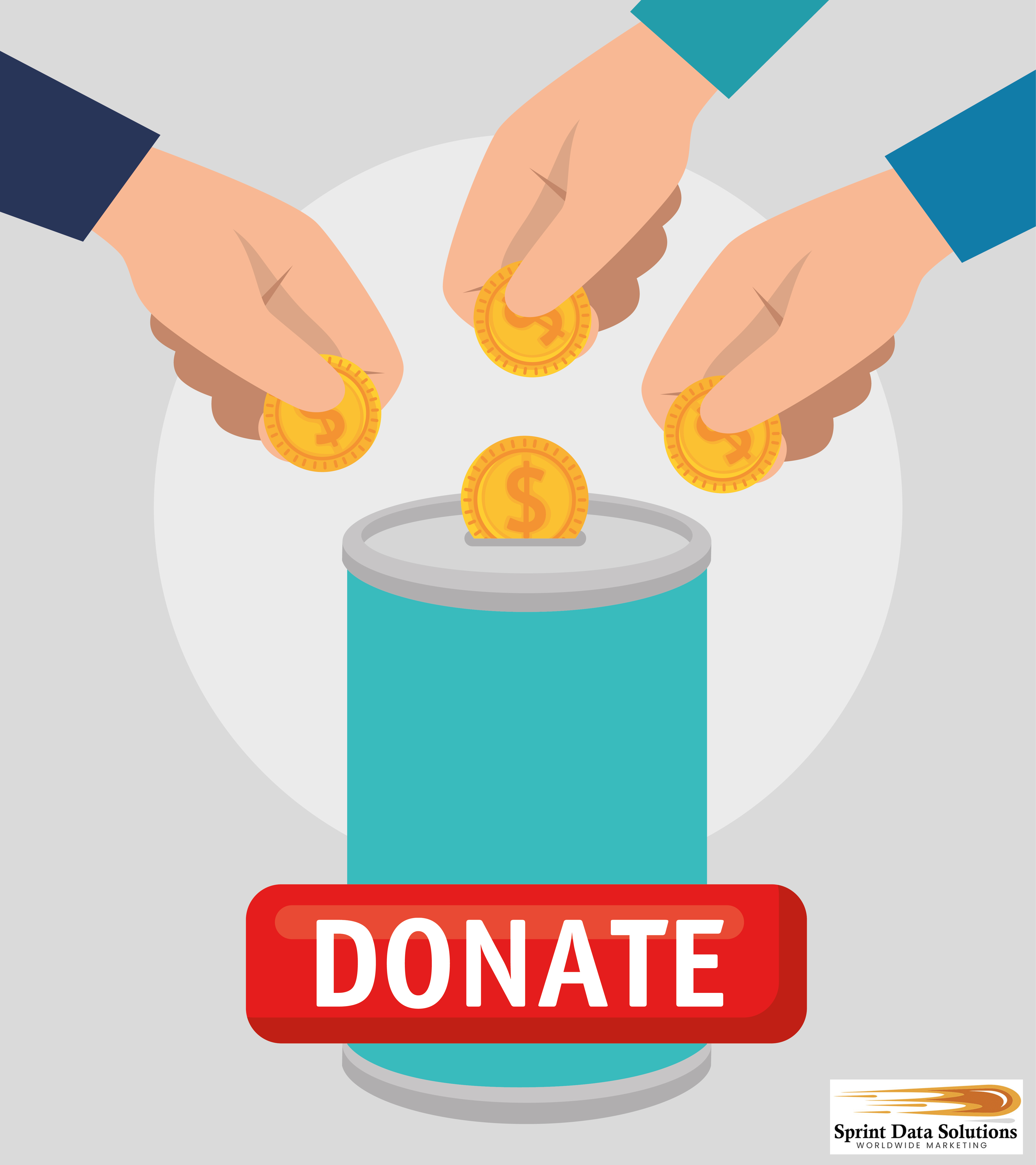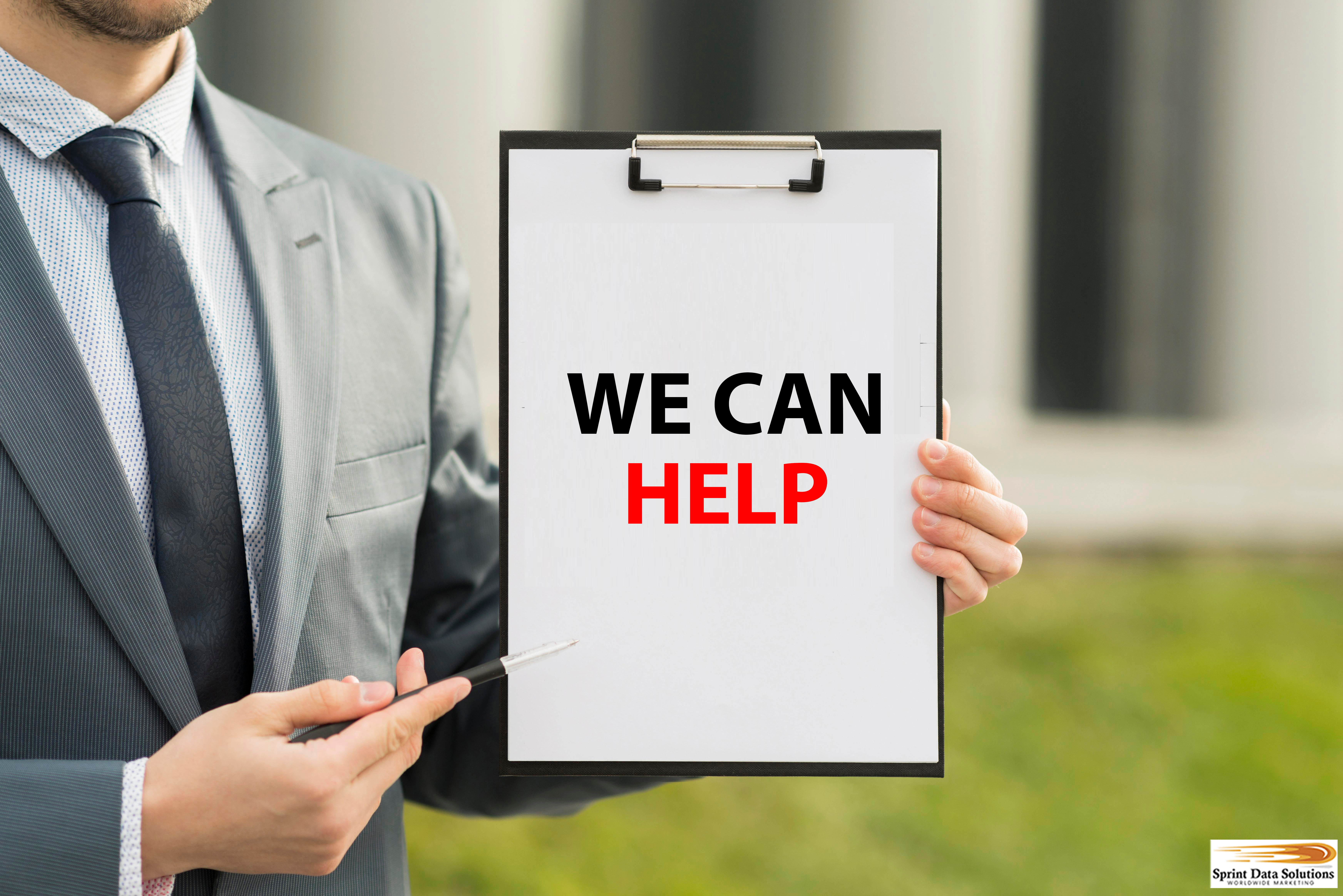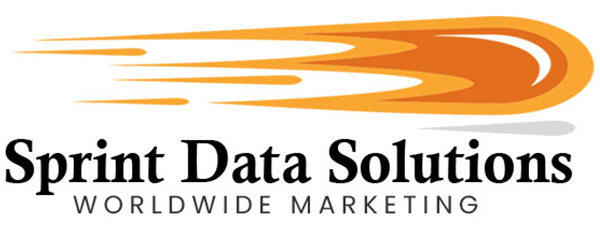The Best Way To Get The Most Donations Is To Find The Right Donors
One of the enduring truths about organized human efforts is that not all of them are designed—or destined—to be profitable. In many cases, the objective is not financial gain at all, but rather the pursuit of a cause greater than oneself. Charitable organizations exemplify this reality. These institutions often rally significant numbers of people, along with extensive resources, not to earn revenue, but to uplift vulnerable populations or address pressing societal challenges. Whether the aim is to shelter abandoned animals, provide clean water to remote communities, or give underprivileged children access to quality education, these missions are fundamentally about service, not income.
Yet despite their altruistic nature, charitable efforts are not immune to the practical demands of the real world. The logistics of running a nonprofit—staffing, transportation, outreach, administrative support, technology, and supplies—all require funding. The crucial distinction is that these organizations typically do not generate income through conventional business models like product sales or paid services. Instead, they rely heavily on philanthropy, grants, and voluntary contributions. This dependency on external financial support makes fundraising and donor engagement critical elements in sustaining their operations. Without steady and reliable streams of funding, even the most heartfelt and impactful mission can falter. Therefore, while their goals may transcend profit, their survival is inexorably tied to the generosity of individuals, communities, and institutions willing to invest in a better world.

A Spectrum Of Worthy Causes
Charitable giving remains one of the most impactful ways the American public can support a broad spectrum of social, environmental, and humanitarian causes. From education and healthcare to veterans’ services and disaster relief, virtually every sector of American life stands to benefit from financial contributions. While individual donations may seem modest in isolation, the collective power of widespread public generosity often translates into significant positive change. In addition to grassroots support, numerous corporations and high-net-worth individuals also choose to channel a portion of their substantial earnings into philanthropic initiatives, amplifying the impact of smaller donations. To support organizations in their outreach efforts, Sprint Data Solutions Worldwide Marketing offers a comprehensive, well-curated database of donors segmented by interest area, enabling nonprofits to target the right audience for their fundraising campaigns and expand their mission’s reach effectively.
Donor Mailing Lists
If you’re interested in identifying individuals or organizations that have contributed to charitable or advocacy efforts—regardless of the specific cause—there exists an extensive and diverse database of donors from all walks of life. These contributors range from everyday citizens to high-net-worth individuals and from small local businesses to national corporations. The generosity of Americans spans across every region of the country, making it possible to locate donors in virtually any area. By applying specific filters such as geographic location, income level, industry, or demographic characteristics, you can strategically narrow down the list to suit your campaign goals. Whether you’re focusing on local community support or targeting a broader national audience, these refined metrics help ensure you’re connecting with the most relevant and likely supporters for your cause.
Food Bank Donors
While every American strives for the stability of a steady income to cover essentials like food—particularly when supporting a family—life doesn’t always go as planned. Unexpected events such as job loss, natural disasters, medical emergencies, or other personal hardships can suddenly leave individuals and families struggling to put meals on the table. For many, access to food becomes a daily concern rather than a given.
Recognizing this harsh reality, countless compassionate individuals feel compelled to make a difference. They choose to support those in need by donating food, money, or volunteering their time. Food insecurity affects millions across the country, and the existence of food banks in nearly every major city provides a structured and efficient way for people to give back. Whether it’s contributing to a local pantry or supporting a national hunger relief organization, the willingness to help those in need remains a powerful force for good in American communities.
Homeless Shelter Donors
Homelessness remains a deeply rooted and urgent issue in many urban areas across the United States. As temperatures plummet in winter, those living on the streets face severe health risks, including hypothermia, frostbite, and in extreme cases, death from exposure. However, the problem is not confined to one season or one cause. People can find themselves homeless due to a variety of complex circumstances. Some are fleeing abusive households and have no safe place to go. Others struggle with untreated mental health disorders or substance abuse, which can impair their ability to maintain employment or stable housing. A growing number face financial hardship, where rising rents, job losses, or unexpected medical bills make it impossible to keep their homes.
Homelessness is not limited to large cities—it affects communities of all sizes across the country. In response, numerous shelters and transitional housing programs offer short-term refuge and help individuals work toward long-term stability. These organizations often provide not just a bed for the night, but also meals, mental health support, job placement assistance, and pathways to permanent housing. Public awareness and concern about this crisis have led many citizens to contribute through financial donations or by volunteering their time. Whether through organizing clothing drives, serving meals, or offering professional services like legal or medical aid, volunteers play a critical role in alleviating the hardships faced by homeless individuals. Addressing homelessness is a multifaceted challenge, but with sustained public support and comprehensive services, meaningful progress can be made.
Animal Abuse Donors
Many Americans share a deep emotional bond with animals, especially pets such as dogs, cats, and other companion animals. This connection often fosters a strong sense of empathy and responsibility toward animal welfare. Even among those who may not identify as passionate animal lovers, there is generally a widespread cultural consensus against animal cruelty. As a result, awareness of abuse cases—whether through media coverage, social networks, or local outreach—frequently prompts a strong emotional response. People are moved by the idea that creatures who are defenseless and dependent on humans for care and compassion are subjected to suffering. For pet owners in particular, the thought of harm befalling an innocent animal evokes the same level of outrage and urgency as it would for the mistreatment of a child or vulnerable loved one. This emotional trigger often leads many to take action—through donations, fundraising, advocacy, or direct volunteer work—once they become aware of the need. Animal shelters, rescue organizations, and anti-cruelty campaigns benefit significantly from this shared compassion, which is deeply embedded in American values of justice, care, and protection for those who cannot speak for themselves.

Women’s Shelter Donors
While the United States continues to strive toward the ideal of equality, the unfortunate reality is that true equity remains elusive—particularly for women facing domestic abuse. Despite societal progress, statistics consistently reveal that women are disproportionately affected by intimate partner violence. For many survivors, the most viable path to safety begins with leaving their abusive environments, but this often leads to an uncertain and precarious future, including the risk of homelessness. In response to this critical need, women’s shelters have been established across the country to provide not only immediate physical safety but also vital emotional and practical support. These shelters serve as secure, confidential sanctuaries where women can begin the process of recovery, shielded from the threat of further abuse. Beyond offering a roof over their heads, many of these facilities provide counseling, legal assistance, childcare, and job training services—tools that empower survivors to rebuild their lives with dignity and autonomy. In doing so, women’s shelters serve as essential lifelines, helping to break the cycle of abuse and fostering hope for a better future.
Emergency Disaster Donors
In recent years, Americans have witnessed the devastating impact of natural disasters across various regions of the country. From the relentless wildfires that rage through California’s landscapes to the powerful hurricanes battering the coastlines of Florida and the Gulf states, these events often leave widespread destruction in their wake. Entire communities can be uprooted in a matter of hours, with families losing homes, possessions, and even loved ones. What’s especially heart-wrenching is that these tragedies strike indiscriminately—people who were living stable, productive lives can suddenly find themselves without shelter, resources, or direction, not due to any personal failing, but because nature acted with overwhelming force.
The scale of these disasters presents unique challenges. Emergency services, nonprofits, and government agencies are often overwhelmed by the sheer number of victims needing immediate support. Unlike isolated cases of homelessness, natural disasters can render thousands of people homeless at once, creating logistical nightmares for shelter, food distribution, and medical care. The emotional toll, too, is immense, as victims cope with both physical loss and psychological trauma.
Despite the grim circumstances, one of the most inspiring aspects of these events is the solidarity shown by fellow Americans. Time and again, individuals and communities not directly affected step up to help—donating money, essential supplies, and even their time. Civic groups, faith-based organizations, and everyday citizens rally together to support relief efforts. Volunteers travel across states to assist in rebuilding efforts, cook meals, or simply offer a comforting presence. This compassion and unity serve as a powerful reminder of the strength and generosity that often define the American spirit during the nation’s darkest hours.
Corporate Donors
While individual donors play a vital role in supporting charitable causes, corporate entities are equally important contributors—often with the potential to make much larger and more impactful donations. Just like affluent individuals, corporations can take advantage of tax benefits when they support nonprofits or humanitarian efforts. These incentives make philanthropy a financially strategic move for businesses, encouraging greater levels of giving.
Beyond monetary contributions, corporations can offer significant value through in-kind donations that directly leverage their products, services, or logistical capabilities. These non-cash contributions often meet urgent needs more effectively than cash alone. For instance, in the wake of a natural disaster such as a hurricane, companies in the food and beverage industry might supply ready-to-eat meals or bottled water. These donations address immediate survival needs and can be mobilized more quickly than financial aid. Similarly, technology firms can offer communication tools, while logistics companies can provide transportation support for relief efforts. In this way, the corporate sector becomes a crucial partner not just in funding, but in delivering real-world solutions where and when they are most needed.
Medical Donors
Medical treatment remains one of the most critical areas where Americans often need assistance, especially when faced with dire health challenges that are financially overwhelming. For many, life-saving treatments such as chemotherapy, organ transplants, or advanced therapies are simply out of reach due to prohibitive costs and inadequate insurance coverage. Others might require complex surgical interventions—procedures that could restore mobility, independence, or even basic quality of life—but struggle with the financial burden. Additionally, unforeseen emergencies like accidents or natural disasters can leave individuals and families in sudden need of intensive medical care without the resources to pay for it.
Americans, known for their generosity, often feel a strong moral calling to help others regain their health and return to a fulfilling life. Medical causes consistently inspire charitable giving, but the field itself is vast and diverse. Some donors gravitate toward supporting large research organizations working tirelessly to develop better treatments and potential cures for devastating diseases like cancer, Parkinson’s, or Alzheimer’s. Others are more inclined to contribute directly to individuals—real people with urgent medical needs whose stories resonate deeply. Whether it’s helping to fund an experimental treatment, cover the cost of surgery, or assist in long-term rehabilitation, donors have countless avenues to make a meaningful impact. The broad scope of medical-related giving ensures there’s a cause to connect with every compassionate heart.
Special Issues Donors
There are also situations where timeliness or ongoing public discourse plays a crucial role in the need for support, even when they aren’t directly related to emergencies. For instance, operations to rescue children trapped in inaccessible locations often demand specialized equipment and trained personnel. These efforts can be costly, requiring immediate donations not only to procure essential tools but also to ensure that rescue teams are sustained throughout their mission. In other scenarios, long-standing causes continually depend on public contributions to maintain momentum. Civil rights advocacy, for example, often sees surges in funding needs during periods of heightened controversy—such as those involving racial, gender, or religious discrimination—when legal battles or public awareness campaigns demand rapid mobilization of resources.
Additionally, deeply divisive social and political issues such as abortion rights (both pro-life and pro-choice), gun control, and freedom of speech frequently generate fundraising drives to support advocacy, education, or legal efforts on either side of the debate. These causes may not always be tied to a single event, but their persistent relevance in public discourse ensures that the need for financial support remains ongoing. Donations in such contexts help sustain outreach, policy research, lobbying, and public engagement to influence change or uphold existing rights and laws.
Veteran Donors
Many Americans hold deep respect and gratitude for military veterans who have selflessly risked their lives to defend the nation’s freedoms and uphold its values. These individuals often serve under extreme conditions, enduring both physical and psychological hardships in the line of duty. However, once their service ends, the transition back to civilian life can be unexpectedly challenging. Veterans frequently confront a host of issues ranging from post-traumatic stress disorder (PTSD) and depression to financial instability and lack of access to adequate healthcare. Despite their immense sacrifices, too many find themselves navigating a system that is underfunded, bureaucratic, and ill-equipped to meet their unique needs. This neglect can lead to feelings of abandonment, frustration, and even homelessness.
Fortunately, there is a growing awareness among citizens and organizations about the importance of supporting those who once wore the uniform. Numerous nonprofits, community groups, and individual donors have stepped up to fill the gaps left by public institutions, offering counseling, job training, housing assistance, and other vital services. These acts of generosity not only provide tangible relief but also reaffirm the nation’s commitment to its defenders. By recognizing that freedom comes at a cost—and that those who paid it deserve continued care—we take meaningful steps toward ensuring that veterans can reintegrate with dignity and purpose into the society they served to protect.
COVID-19 Donors
Over the past few years, the global outbreak of COVID-19 has profoundly transformed society, triggering a public health crisis with long-lasting repercussions for individuals, economies, and institutions. As businesses scrambled to adapt to lockdowns, remote work mandates, and social distancing regulations, even those without underlying health conditions faced unprecedented hardships—ranging from job loss and social isolation to mental health challenges. However, the pandemic’s toll extends far beyond temporary disruptions. In the United States alone, over a million people have lost their lives to the virus, a staggering figure that underscores the pandemic’s severity.
More concerning still is the growing population of COVID-19 survivors who now struggle with chronic health issues that compromise their ability to function. One such condition, known as “Long COVID,” has emerged as a persistent post-viral syndrome affecting millions. Individuals suffering from Long COVID report an array of debilitating symptoms such as shortness of breath, persistent fatigue that doesn’t improve with rest, and cognitive impairments often described as “brain fog.” While not always fatal, these symptoms can severely impact one’s quality of life and ability to maintain employment. Many of these individuals, previously healthy and active, now find themselves unable to return to the workforce, becoming involuntarily dependent on medical support, disability accommodations, or public assistance. Long COVID has therefore created a new category of disability—one that challenges healthcare systems, labor markets, and social services to evolve in response to the changing needs of the population.
Paralysis Donors
Many Americans experience a profound loss of mobility due to a range of circumstances, including congenital birth conditions, debilitating illnesses, or traumatic accidents. These life-altering situations can manifest as partial paralysis, where individuals lose movement or control in specific parts of their body—such as diminished use of certain fingers, toes, or limbs. In more severe instances, paralysis may become complete and affect large regions of the body. One of the most challenging forms of paralysis is paraplegia, which results in the loss of function in the lower half of the body, typically requiring the individual to rely on a wheelchair for mobility. Even more devastating is quadriplegia, a condition in which all four limbs and the torso are paralyzed, often leaving individuals confined to a bed and reliant on full-time care.
Paralysis doesn’t only impact mobility—it transforms every aspect of daily life. Those affected often need specialized medical care, assistive technologies, accessible housing, and daily support with basic tasks such as bathing, dressing, or eating. These needs come at a significant financial cost. Unfortunately, the resources provided by insurance or government assistance may be insufficient to cover the breadth and depth of support required. For many, charitable donations and public contributions become lifelines. Such generosity can provide critical equipment, home modifications, in-home caregivers, or simply ensure that a paralyzed individual has access to nutritious meals and essential medications. Without this support, some individuals face devastating consequences, including homelessness and worsening health. Supporting those with paralysis isn’t just an act of kindness—it’s often a decisive factor in preserving their dignity, stability, and ability to live a meaningful life.
Special Olympics Donors
The Olympic Games are a global celebration of human physical achievement, showcasing individuals who dedicate their lives to surpassing the boundaries of strength, speed, and endurance. These athletes serve as a testament to what the human body can accomplish through intense training, discipline, and unyielding determination. In a parallel but equally powerful way, the Special Olympics provide a platform for individuals with intellectual and physical disabilities to demonstrate their own extraordinary courage and capability. Unlike the traditional Olympics, where athletes often compete for national prestige and commercial endorsements, participants in the Special Olympics compete to challenge societal assumptions and to prove that greatness can emerge from any set of circumstances, no matter how daunting.
Events in the Special Olympics range from track and field competitions to basketball and swimming, with adaptations made to accommodate a wide range of disabilities, including cognitive impairments and mobility limitations. Athletes often overcome obstacles that go beyond physical training—they also confront social stigma, accessibility barriers, and personal health challenges. Despite these additional hurdles, their performances are filled with enthusiasm, perseverance, and joy, embodying a spirit of sportsmanship that deeply resonates with audiences.
However, the Special Olympics do not receive the same level of media exposure, corporate sponsorship, or government funding as the traditional Olympics. This disparity highlights the importance of continued public support and charitable donations, which help cover the cost of training programs, equipment, travel, and event organization. For many of these athletes, the Special Olympics represent one of the few places where their talents are recognized and celebrated on a public stage. As such, supporting the Special Olympics is not just about aiding a sports event—it’s about fostering a more inclusive society where everyone has a chance to shine.
Children’s Lunch Program Donors
It is often said that children are the backbone of a nation’s future, and providing them with a strong foundation through quality education is one of the most effective ways to secure that future. However, education alone is not enough. A child’s ability to focus, learn, and thrive in school is closely tied to their physical health and well-being—particularly their nutrition. A hungry child is not just distracted; they are often fatigued, irritable, and less able to engage meaningfully in the classroom. Unfortunately, for many families facing financial hardships, difficult choices have to be made—sometimes prioritizing essentials like rent or utility bills over daily nutritious meals.
To address this critical gap, school-based lunch programs and child nutrition initiatives operated by various community organizations play a vital role. These programs provide balanced, nutritious meals to children who may otherwise go without, ensuring that hunger is not a barrier to learning. Such programs don’t just fill stomachs—they create a more equitable learning environment where all children have a fair chance to succeed. But these initiatives require significant resources, including funding for ingredients, meal preparation, and sometimes even delivery logistics. As a result, donations from individuals, businesses, and philanthropic groups become an essential lifeline for sustaining and expanding these efforts. Supporting children’s nutrition is not just a charitable act—it’s an investment in the nation’s future.
Unwed Mother Donors
While many Americans still uphold the ideal of the traditional nuclear family, the reality for a significant number of women is far different. Through no fault of their own, some women are forced into the role of single parenthood due to deeply challenging—even traumatic—circumstances. Domestic abuse, abandonment, and, in the most tragic instances, sexual assault, can leave a woman to raise a child without the support of a partner. Parenting is universally acknowledged as one of the most demanding responsibilities in life; attempting to fulfill this role alone, and in the aftermath of trauma, makes the burden even more profound.
Despite these difficulties, there is hope. Across the nation, many Americans are moved by compassion and a sense of social justice to support single mothers striving to build stable, nurturing homes for their children. These women often work tirelessly to provide love, structure, and opportunity to the next generation—but financial instability can hinder their efforts. For those who believe in giving every child a fair chance, supporting unwed mothers through charitable donations, community programs, and public initiatives is a powerful act of solidarity. By investing in these families, we not only help ease their immediate hardships but also contribute to a stronger, more equitable future for all of America.
Church Donors
Many Americans continue to practice a religion, though the spectrum of faiths represented in the country is now remarkably broad. Christianity remains the most prevalent religion, but it encompasses a wide range of denominations and interpretations. Traditional branches such as Roman Catholicism and various forms of Protestantism (including Baptist, Methodist, and Lutheran traditions) are still widespread. At the same time, uniquely American expressions of Christianity have emerged and gained prominence, such as Evangelical movements and the Church of Jesus Christ of Latter-day Saints (commonly known as Mormonism).
Beyond Christianity, a growing portion of the American population adheres to other world religions. Judaism and Islam, both Abrahamic faiths with deep historical roots, maintain vibrant communities across the country. Additionally, the increasing cultural diversity in the United States has brought greater visibility to Eastern religions such as Buddhism, Hinduism, Sikhism, and Taoism, which offer spiritual alternatives that appeal to both immigrants and American-born seekers of new paths.
Religious institutions, regardless of creed, are typically classified as non-profit organizations. This status enables them to accept tax-deductible charitable donations, which are often used to fund community outreach programs, humanitarian aid, educational initiatives, and the upkeep of places of worship. Most religious adherents naturally feel a strong connection to their own faith traditions and are more inclined to support institutions that align with their beliefs. Therefore, a key challenge—and opportunity—lies in effectively connecting donors with religious organizations that reflect their spiritual values and philanthropic intentions.

How We Can Help
Many Americans continue to practice a religion, though the spectrum of faiths represented in the country is now remarkably broad. Christianity remains the most prevalent religion, but it encompasses a wide range of denominations and interpretations. Traditional branches such as Roman Catholicism and various forms of Protestantism (including Baptist, Methodist, and Lutheran traditions) are still widespread. At the same time, uniquely American expressions of Christianity have emerged and gained prominence, such as Evangelical movements and the Church of Jesus Christ of Latter-day Saints (commonly known as Mormonism).
Beyond Christianity, a growing portion of the American population adheres to other world religions. Judaism and Islam, both Abrahamic faiths with deep historical roots, maintain vibrant communities across the country. Additionally, the increasing cultural diversity in the United States has brought greater visibility to Eastern religions such as Buddhism, Hinduism, Sikhism, and Taoism, which offer spiritual alternatives that appeal to both immigrants and American-born seekers of new paths.
Religious institutions, regardless of creed, are typically classified as non-profit organizations. This status enables them to accept tax-deductible charitable donations, which are often used to fund community outreach programs, humanitarian aid, educational initiatives, and the upkeep of places of worship. Most religious adherents naturally feel a strong connection to their own faith traditions and are more inclined to support institutions that align with their beliefs. Therefore, a key challenge—and opportunity—lies in effectively connecting donors with religious organizations that reflect their spiritual values and philanthropic intentions.
Sprint Data Solutions Worldwide Marketing offers a comprehensive suite of contact access points across a variety of channels. Whether you require physical mailing addresses, verified telephone and business numbers, or dedicated email addresses, we can provide accurate and targeted data to meet your specific marketing strategies. Additionally, for campaigns that leverage modern engagement platforms, we offer access to mobile and cellular numbers, enabling the use of SMS/text marketing with precision. All contact information can be categorized and filtered based on geographic criteria—ranging from nationwide outreach down to highly localized regional efforts. Whether your goal is commercial promotion, nonprofit awareness, political campaigning, or philanthropic fundraising, Sprint Data Solutions Worldwide Marketing has the curated donor and prospect lists to support your objectives. Reach out to us today to discover how we can help drive your next campaign to success.






